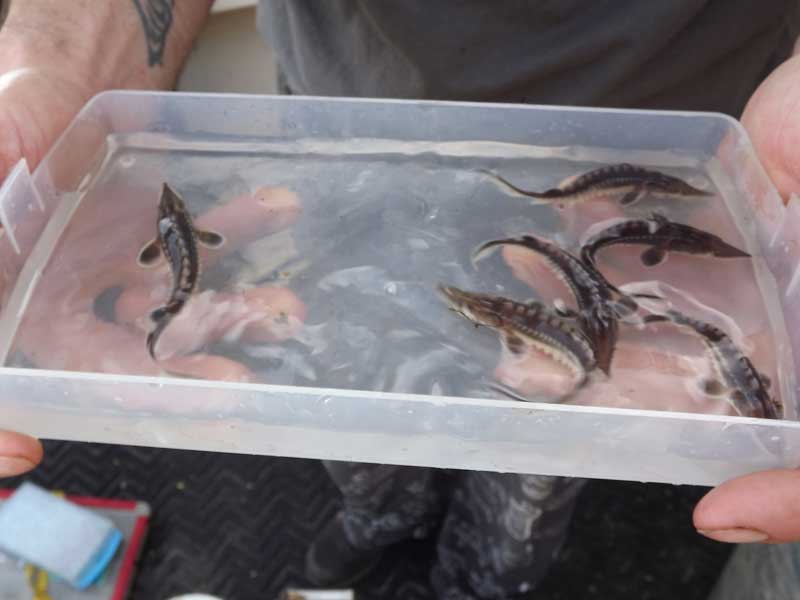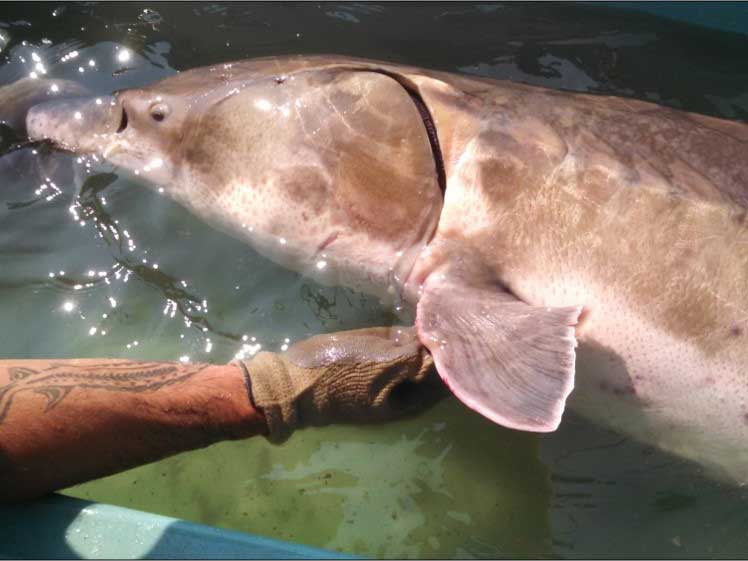Fish Ecology
Atlantic Sturgeon
In the News

VCU Rice Rivers Center is at the center of the Virginia Sturgeon Restoration Team's effort to restore the Atlantic sturgeon to its native range and historical stature within state waters. Leading the group is Matthew Balazik, Ph.D., research assistant professor.
In 2012, Balazik documented fall spawning by the James River's sturgeon, which overturned the long-standing assumption of spring-only spawning and has significant implications for conservation and management of Chesapeake Bay sturgeon.
Fish biologists at the VCU Rice Rivers Center use technology, including drones, high-resolution sonar and acoustic telemetry to document basic life history patterns, such as the timing and location of sturgeon movements between the Chesapeake Bay and the James River. VCU researchers also help state and federal agencies to determine which riverine habitats are most important for critical spawning, nursery and migration activities, as well as the importance of threats like collisions with large vessels and habitat loss. The data generated by center researchers are being used to develop and implement a recovery plan for endangered Atlantic sturgeon populations in the Chesapeake Bay.
Atlantic Sturgeon Overview
Learn more about Atlantic sturgeon, the largest and longest-lived residents of the James River.


Video Center
A Day in Sturgeon Restoration
An insider's view from the VCU Rice Rivers Center boat, as Dr. Matt Balazik and members of the Atlantic Sturgeon Restoration Team catch, tag and release an Atlantic sturgeon.
Baby Sturgeon in the James River
Sturgeon born in mid-September 2018 found during a trawling survey by Rice Rivers Center researchers. Read the VCU News article explaining the significance of this important discovery.
If you notice a dead sturgeon on the river, please contact VCU at (804) 827-0236 or email balazikmt@vcu.edu.